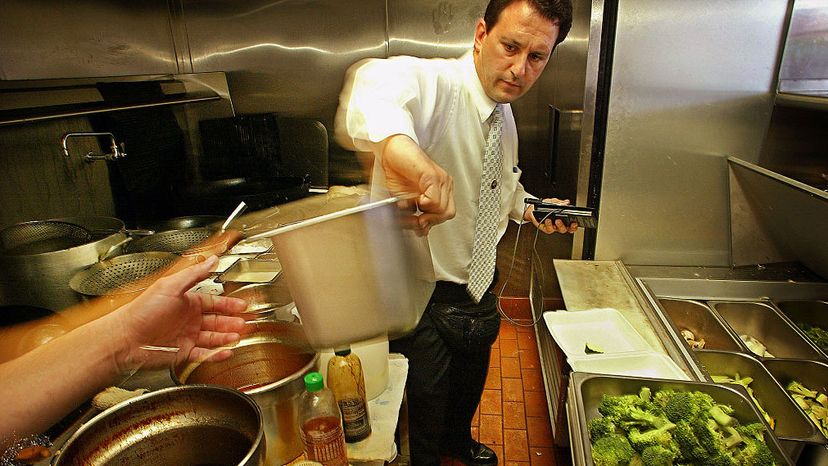What Happens During a Routine Restaurant Health Inspection?

Since restaurant health inspections are unannounced, the first thing the health inspector does is to introduce herself, show an official ID and ask to speak with the manager, owner or person in charge. The manager stays with the inspector throughout the inspection to answer questions and receive immediate feedback and suggestions.
The first stop is what health inspectors call the "dynamic" areas of the restaurant, where food is actively being handled and prepared. By visiting those areas first, the inspector hopes to get the most accurate snapshot of how well the kitchen is complying with food safety regulations [source: Peterson]. The inspector will start with 100 points and then deduct points for various infractions.
Advertisement
In the kitchen, one of the first things that inspectors look for is proper employee hygiene. Kitchen workers need to be following the rules regarding hand washing (rinse, apply soap, scrub for 15 to 20 seconds, dry off with a one-use towel), glove use and hair protection, and no employees should be working while they are ill or have open cuts or wounds (yuck).
Food and storage temperature are also a top priority. The inspector whips out her digital thermometer to test whether raw meats and fish are being cooked to the right temperature: 160 F (71 C) for ground beef, 145 F (62 C for fish) [source: FoodSafety.gov]. She also checks the temperature in all cold food storage areas to be sure they are 40 F (4 C) or below for refrigerators and zero F (minus 18 C) or below for freezers [source: FoodSafety.gov]. Then the inspector quizzes the manager and cooks about their thawing and reheating practices. For example, frozen meat should never be left out to thaw on a counter and leftover soups and broths must be brought to a boil during reheating.
Cross-contamination is another big no-no. Inspectors will observe food preparation practices to make sure that anything that comes in contact with raw meat (knives, cutting boards, hands) is separated from ready-to-eat foods and properly washed and sanitized. The inspector will make sure that all processed and pre-made ingredients used by the kitchen come from approved sources, namely licensed commercial kitchens, and are stored properly.
From there, it's time to inspect the static areas of the restaurant, things that don't change much from day to day. That includes the dishwashing equipment and dish storage areas, handwashing sinks in the kitchen, and the employee and customer bathrooms. Inspectors also check on how toxic cleaning products are stored and labeled and whether the HVAC systems and smoke detectors are functioning properly, as well as the general cleanliness of dining tables, floors, walls and ceilings. Finally, they take a trip out back to inspect the dumpster and garbage areas.
A routine inspection of a casual sit-down restaurant usually takes between one-and-a-half and two hours, while a large hotel kitchen might take as long as four hours [source: Peterson]. If an inspector notices small issues during the walk-through — like a dented can or ketchup bottle — she'll likely have the manager fix it on the spot and not include it as a violation in the report. But anything more serious is going to show up on that report.
An inspector will deduct one point each for most static violations (like dining room furniture not being in good condition or the garbage can being uncovered); two points each for minor infractions (improper storage of toxic cleaning products, employees keeping cell phones in the kitchen, one live roach); and four or five points each for major violations like improper storage temperatures for food or improperly cleaned food contact surfaces [source: FitzGerald].